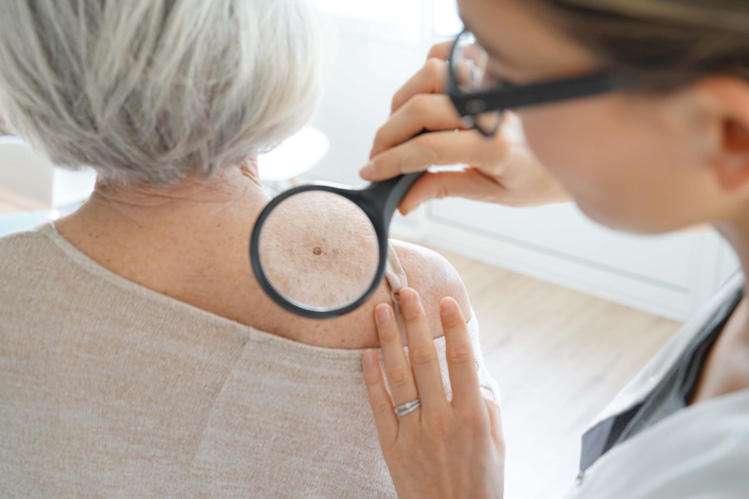Protect yourself from skin cancer with routine screenings.
Protect yourself from skin cancer with routine screenings.
Blog Article
Mohs Surgical Treatment Explained: A Key Procedure in Dermatology for Managing Skin Cancer Effectively
In the realm of dermatology, Mohs surgical treatment stands as a crucial procedure for combating skin cancer, especially basic cell and squamous cell cancer. This intricate medical approach, conceived by Dr. dermatologist. Frederic E. Mohs, focuses on the exact excision of cancerous skin layers, leaving healthy cells untouched. What specifically makes Mohs surgical procedure so efficient and exactly how does it contribute to positive person end results? As we dive much deeper right into the procedure, its advantages, and possible complications, truth value of this procedure becomes progressively noticeable.
Recognizing the Fundamentals of Mohs Surgical Procedure
Although it could seem complicated, Mohs surgical treatment is a specific medical strategy used primarily to treat skin cancer cells. Called after Dr. Frederic E. Mohs, who developed the procedure, it gives the highest possible remedy rate for sure types of skin cancers, consisting of basic cell carcinoma and squamous cell carcinoma. The key purpose of Mohs surgical procedure is to get rid of all cancer cells while sparing as much healthy tissue as feasible. It offers as a recommended alternative for cancers located in cosmetically delicate or functionally critical locations like the face, hands, feet, and genitals. Its precision and high success price have made Mohs surgery a keystone in dermatology, using hope to clients worldwide. It is necessary to keep in mind, however, that this procedure is generally scheduled for particular kinds of skin cancer.

The Treatment: Step-by-Step Failure of Mohs Surgical Treatment
While Mohs surgery might seem difficult, comprehending the detailed treatment can help debunk the process. The procedure begins with the doctor removing a thin layer of visible cancerous skin. This layer is after that very carefully checked out under a microscope for cancer cells. If cancer cells are identified, the surgeon removes another layer of skin and the procedure is duplicated. This cycle proceeds till no more cancer cells are discovered, making sure the total elimination of cancer cells while maintaining as much healthy and balanced skin as possible. The wound is then shut using stitches, a skin graft, or it might be entrusted to heal naturally. Postoperative care is important to advertise recovery and screen for any type of signs of recurrence.
The Advantages of Mohs Surgical Treatment in Skin Cancer Cells Therapy
An impressive number of patients have actually uncovered the one-of-a-kind advantages of Mohs surgery in try here their fight against skin cancer. The treatment is commonly go to these guys executed on an outpatient basis under neighborhood anesthesia, making it much less exhausting on the body than more invasive surgical treatments. hair loss. Mohs surgical treatment presents a superior choice for effective skin cancer cells therapy.
Possible Risks and Problems Related To Mohs Surgery
Despite its countless advantages, Mohs surgical procedure is not without potential threats and problems. Like all operations, it brings a threat of infection, blood loss, and an unfavorable response to anesthesia. In unusual instances, individuals may experience nerve damages, resulting in tingling or weakness in the location of surgical treatment. There's also the opportunity of a recurrence or spread of skin cancer, specifically if all cancerous cells were not totally eliminated during the treatment. Scarring is an additional concern, as it can be obvious depending upon the size and place of the cured area. The psychological impact of a skin cancer medical diagnosis and succeeding surgery must not be taken too lightly, as it can lead to anxiety and anxiety in some patients.
Planning for and Recuperating From Mohs Surgical Procedure: What to Anticipate
To ensure the most effective possible outcome from Mohs surgery, patients need to sufficiently get ready for the treatment and understand what to expect throughout recuperation. Preparation typically involves a comprehensive discussion with the doctor concerning the person's case history, present medicines, and possible allergic reactions. Some medicines may need to be quit prior to the surgical treatment to lessen bleeding. Postoperative treatment is critical for successful recovery. Individuals might experience moderate pain, redness, or swelling, which can be managed with prescribed medicines. Look At This They are encouraged to rest, prevent difficult activities, and maintain the surgical website tidy and completely dry. Normal follow-ups are required to keep an eye on recovery and discover any problems early. The key to recuperation holds your horses' adherence to their doctor's guidelines.
Conclusion

Report this page